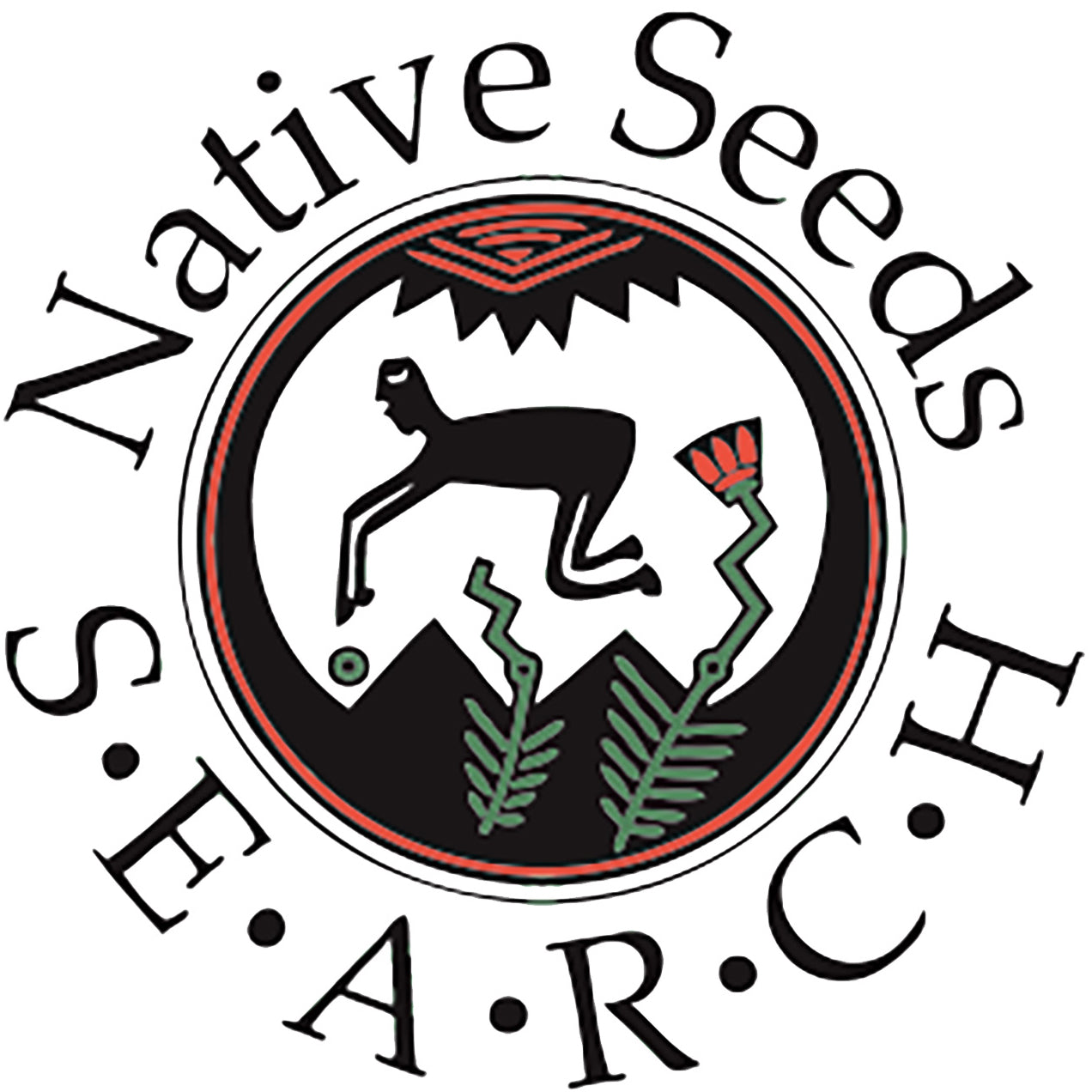
BOTANICAL NAME:
Phaseolus acutifolius
LOCAL TOHONO O’ODHAM NAME:
Stoa Bawi or To:Ta Bawi
COLLECTION SITE:
Tohono O’odham Reservation, Pima County, Arizona
COLLECTION DATE:
1977
HISTORICAL ORIGINS:
Tepary beans are native to the Sonoran Desert, and are thought to have been first domesticated from wild plants in Northwest Mexico. Teparies have apparently been cultivated by desert-dwelling indigenous peoples in this area for 4,000 years. Particularly in the last 30 years, tepary beans have spread to other arid regions worldwide.
CULINARY USES:
Tepary beans also offer some unique flavor and textural qualities that make them very versatile in the kitchen. They are ideal for soups, stews, and cold salads because they stay whole when cooked. When pureed, teparies have a creamy texture so they can also be used for dips and creamy soups. Their dense, meaty texture is great for vegetarian dishes. In general, all tepary beans have a rich nutty flavor. White varieties have a slightly sweeter flavor than brown varieties which are very earthy.
NUTRITIONAL BENEFITS:
Tepary beans provide slightly more protein per ounce than common beans like pintos or kidney beans. They also contain higher amounts of calcium, niacin, iron, zinc, magnesium, phosphorous, and potassium. Tepary beans provide a great source of calcium for those who do not consume dairy products. Tepary beans' greatest nutritional trait, however, may be that they contain high amounts of soluble fiber and are low on the glycemic index. Therefore, they are very helpful in controlling cholesterol and diabetes. Because tepary beans are a high fiber food, they digest slowly. This provides sustained energy and a feeling of being full making them a great energy food for athletes, dieters and diabetics. Many people who are turned off by beans due to their tendency to cause digestive discomfort will be pleasantly surprised that tepary beans also lead to less gassiness.
MEDICINAL USES:
The reservation system and urban areas resulted in a decrease in traditional farming and a loss of traditional diets dominated by tepary beans. These traditions are once again becoming commonplace. The reintegration of teparies to the Tohono O’odham diet has resulted in a decrease in the occurrence of adult-onset diabetes within a group that has a rate for this condition that is fifteen times the national average. The high levels of fiber within teparies help to prevent the rapid rise in blood sugar levels after meals that is dangerous for diabetics.
SOCIO-CULTURAL IMPORTANCE:
Tepary beans are culturally very important to the Tohono O’odham and Pima peoples of Southern and Central Arizona. It is said that the Papago, as the Tohono O’odham were once refered to, were named from a condensation of the words Papavi Kuadam which means ‘tepary eaters’. The white tepary bean is known to the Tohono O’odham as the child of the desert people, which makes up the Milky Way. According to legend, an old man treated his grandson very badly. The boy ran away and lay down up above with the stars. Looking down, the boy saw his grandfather fraught with remorse and grief and decided to visit him. The boy brought his grandfather some white beans, and instructed him to plant them near where he slept. When he had planted the beans and saved the seeds four times, the boy told his grandfather to eat the beans and think of him, saying, “You will be alive and happy from me, your Grandchild, who is the white bean. That gray streak stretched across the sky is my home”.
Tepary beans have not always been as numerous as the stars in the Milky Way for the Tohono O’odham. In the 1920's, Tohono O’odham farmers grew 1.5 million pounds of tepary beans per year, however, during the 1930's, with the increase of mechanization and irrigated agriculture, far fewer people were required to work the fields, and varieties traditionally selected for their drought-tolerance were no longer so valued. By the 1950s, tepary beans extremely rare.
In the 1970's and 1980's, Native Seeds/SEARCH began to identify tepary bean sources and promote their use. Today, tepary cultivation is much more widespread and dozens of varieties are now being grown, several for commercial sale. At Native Seeds/SEARCH, we conserve nearly 100 accessions of domesticated and wild tepary beans that are adapted to low and high desert environments.
CULTIVATION TECHNIQUES:
Tepary beans are ideally suited to the dry farming methods, such as those used by traditional Tohono O’odham farmers. They are one of the most heat, drought and salt-tolerant legumes in the world, thriving in the alkaline desert soil. They are one of the few bean varieties that do well when the air temperature reaches over 105 degrees F. Teparies are typically planted with the monsoon rains in July. Special planting songs are sung to I’itoi, the Tohono O’odham creator, to ask that the earth be blessed with an abundant harvest. Teparies are typically planted in a furrow, with 3-4 beans being placed in holes that are 1-1.5 inches deep. Harvest occurs in October, when 80 percent of the pods on the plant are brown and crispy. The remaining beans are harvested as they ripen.
REFERENCES:
Gary Paul Nabhan (1985). Gathering the Desert. Tucson, AZ: The University of Arizona Press.
Kruse-Peeples, Melissa (2015) Celebration of Tepary Beans Parts 1&2. Retrieved from /learn/nss-blog/341-celebration-of-tepary-beans-part-1
Tohono O’odham Community Action with Mary Paganelli Votto and Frances Manuel (2010). From I’itoi’s Garden:Tohono O’odham Food Traditions. Retrieved from http://www.tocaonline.org/
